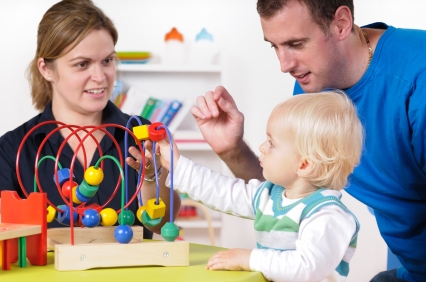How To Teach a Child Patience
We’ve all heard how patience is a virtue. It’s too bad this sentiment isn’t understood by your little one. It can be quite a daunting task to teach a child patience. The younger the child is, the more demanding he or she tends to be.
Chances are, they don’t even really understand what patience is, let alone know how to exercise it.
Your child is going to need some patience and guidance from you. When trying to teach a child patience, there are three things that are very important: start as early as you can, be consistent, and use positive reinforcement.

Table of Contents
Start At An Early Age
The best thing to do is start teaching patience while your child is still very young. However, if you start later it is still better than never at all.
Begin with small lessons. The earlier you can start, the easier this will make it for your child to start catching on. Start out with something simple like delaying gratification for just a couple of minutes after your child asks to have something. He needs to learn that if you happen to be busy that he might not be able to get what he is asking for immediately and will need to wait.
If your child, for example, asks for juice or milk, tell him calmly that as soon as you finish what you are doing that you will get him some. When you make a promise, be sure that you follow through.
Don’t start working on another project before doing what you said you were going to do. When you tell your child that he needs to wait, set an egg timer to go off when the time is up. You can also show your child the clock and let them know when the numbers or hands on the clock get to a certain point that the waiting time will be over.
Be Consistent
In order for the your child to really learn what patience is, you have to be consistent in how you teach this concept. For example, if you promise your child that once he finishes lunch he gets to play with his blocks, don’t go back on your promise by telling him he needs to take his nap first.
Also, don’t send mixed messages by sometimes telling your child that he needs to be patient, and then other times not following through and giving in to whatever his demands are. Instead of him learning to be patient and getting what he wants eventually, he will just get confused instead.
Positive Reinforcement
When your child behaves in the right way, reward him. However, when he doesn’t don’t react in a negative way. The learning process for your child should be understandable and easy.
For example, if your child tries to interrupt you while you are talking on the phone because he wants you to read him a story, explain to him in a calm way that you are speaking on the phone right now and can’t read to him right now.
Don’t yell at him to be quiet. Instead, patiently explain the situation to him so that he understands that this isn’t a good time for reading. Once he has patiently waited for you to finish your phone conversation, give them the reward of reading a story to him. This will help teach your child that learning how to be patient does have its rewards.
It is easier for children to make friends when they are young because they learn to take turns and how to share. They will carry these lessons with them into adulthood. Any child can be taught the virtue of patience.
If you start today, stay consistent with your lessons, and use positive reinforcement, your child will learn quite easily how to be less demanding, better mannered and more patient.






